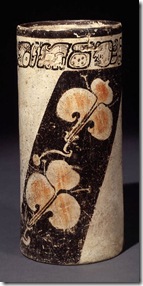Suppose your pottery shop has a pretty good reputation. Suppose your neighborhood is full of pretty good pottery shops, maybe 30 or so. Suppose you all make pretty much the same stuff. And suppose you all even formed a collective of sorts to help everyone manage business. Now suppose that “neighborhood” covers only 2 or 3 city blocks. And suppose that “reputation” means an entire continent eagerly standing in line to buy your neighborhood’s handiwork.
About 340 years ago those “neighborhood potteries” were in the town of Delft. That “collective” was the Guild of St. Luke. And that “reputation” ruled Europe for almost a hundred years.
A question arises. Why didn’t those Dutch potteries sign their work? With such high demand, and in such tight quarters – 2 or 3 city blocks! – why did they opt for anonymous group identity over individual recognition? Today we immediately imagine signing our work as basic marketing. Branding. A signature on a pot seems the most obvious way of saying: “Hey! I’m over here!” But that’s just our perspective.
Delft potteries did ultimately sign their work. Their dominance in Europe, begun during a vacuum left by a prolonged civil war in China with its curtailing of export porcelain production, was being challenged. The war had ended, and Chinese porcelain was back. Also, other European potteries were getting serious about their own faience, porcelain, and creamware. This competition threatened delftware’s very existence. It was sink or swim, so they signed – and most ultimately sank.
But another reason why they began signing pots tells us perhaps as much about ourselves as about them. A faint but fundamental shift had happened. The delftware craze required a consistent commercial ceramic materials supply network. Nobody could do that much production while digging their own clay. Standardized materials ultimately meant easy replication of anything, anywhere, anytime. “Style” as a defining aspect of “tradition” in pottery would no longer be understood as a local distinction, tied to a specific geographic (and geologic) place with unique, communally shared values. Style would now become a showcase for individual expression based, essentially, on looks.
What does all this mean? Maybe not much. These events weren’t the beginning of that change in perception, nor its end. Still, the beginnings of the factory system in ceramics was a “writing on the wall” moment that, ironically, propelled individual fame over collective expression.
Reading:
Delffse Porceleyne, Dutch delftware 1620 – 1850. Jan Daniel van Dam. Wanderers Publishers/Amsterdam, NL. 2004.
